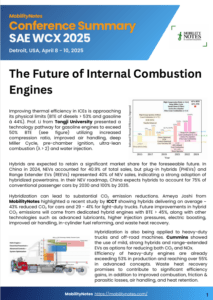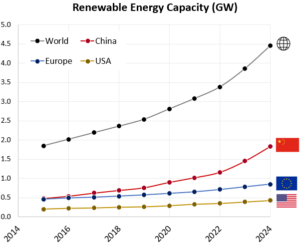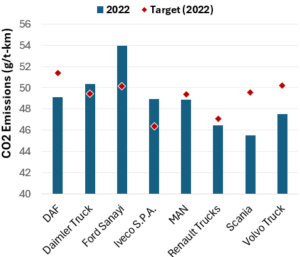Conference Presentation Summary
Hybridization of heavy-duty vehicles for meeting European CO2 standards
Reference: Cummins 45th International Vienna Motor Symposium 2024
CO2 standards are getting tighter for both light- and heavy-duty vehicles. We have previously covered the recently revised European standards for heavy-duty (HD) vehicles, which require a 45% reduction in CO2 emissions by 2030, increasing to 65% by 2035 and 90% by 2040. These standards are clearly set with a view of encouraging adoption of zero tailpipe emitting vehicles. Still, in principle they are technology neutral and can be met through a combination of advanced internal combustion engine technologies as well.
Hybridization is seen as a powerful tool to reduce CO2 emissions without the need to add large batteries. This is especially popular in the light-duty (passenger car) segment which is seeing a significant increase in market share lately (in Europe and US). Hybridization has not been applied to the same extent in HD vehicles – likely due to the higher share of high-speed on-highway driving (energy recovery with hybrids is especially beneficial for transient driving), and the cost-benefit considerations.
Now, with these stringent standards being promulgated, hybridization is being evaluated for HD vehicles as well. Cummins presented their theoretical study on this topic at the recent Vienna Motor Symposium. Here’s a summary.
Sign up here to receive such summaries and a monthly newsletter highlighting the latest developments in transport decarbonization
5-Min Monthly
Sign-up to receive newsletter via email
Thank you!
You have successfully joined our subscriber list.
Recent Posts

Conference Summary – SAE WCX 2025
![]()
A summary of the “SAE WCX 2025” conference held in Detroit.

IRENA Renewable Energy Capacity Statistics 2025
![]()
According to the latest report from IRENA, 2024 saw the largest increase in renewable capacity, accounting for 92.5% of overall power additions.

CO2 Emissions Performance of Heavy-Duty Vehicles in Europe – 2022 Results
![]()
The European Commission has published the official 2022 CO2 emission results for heavy-duty vehicles. Many OEMs are ahead of the targets and have gained credits, while others have their work cut out as we approach the 2025 target.

